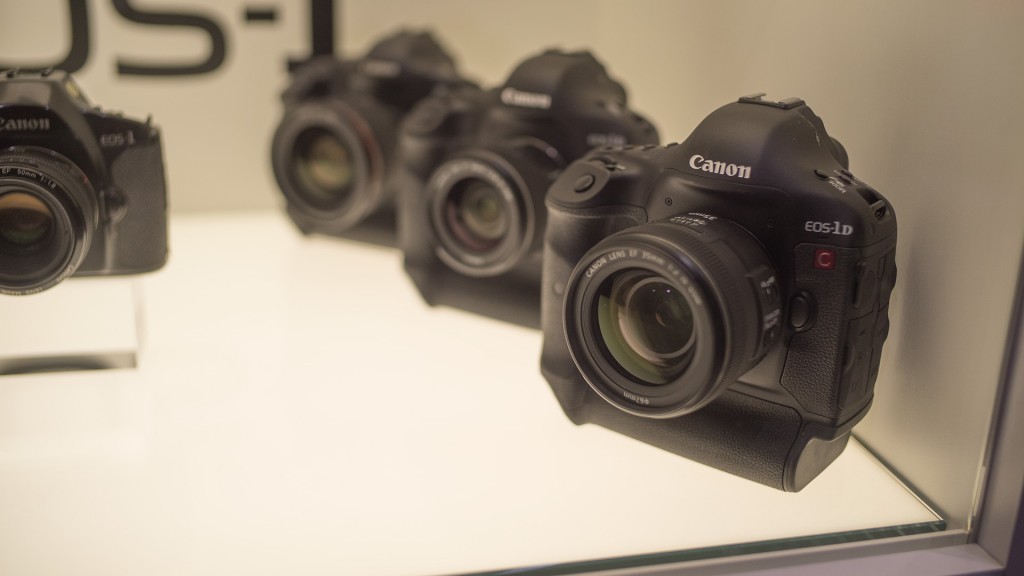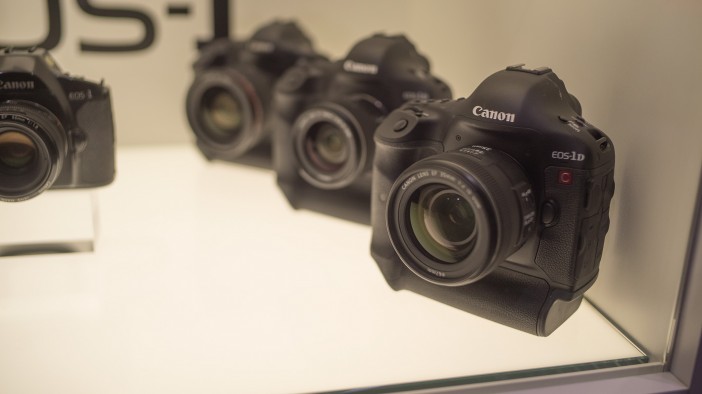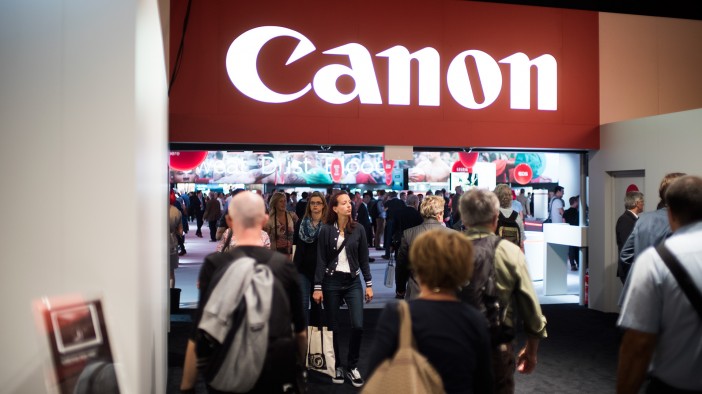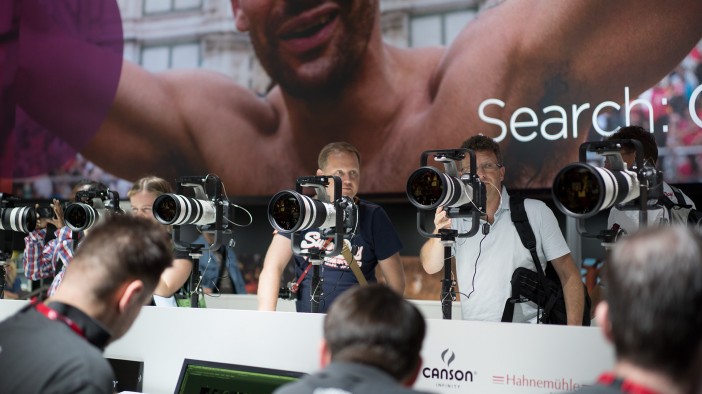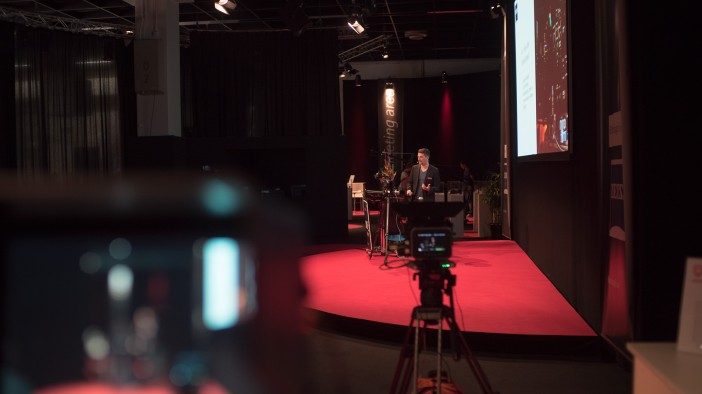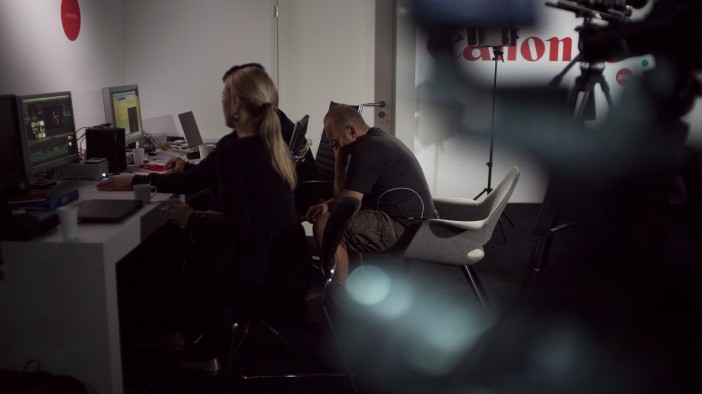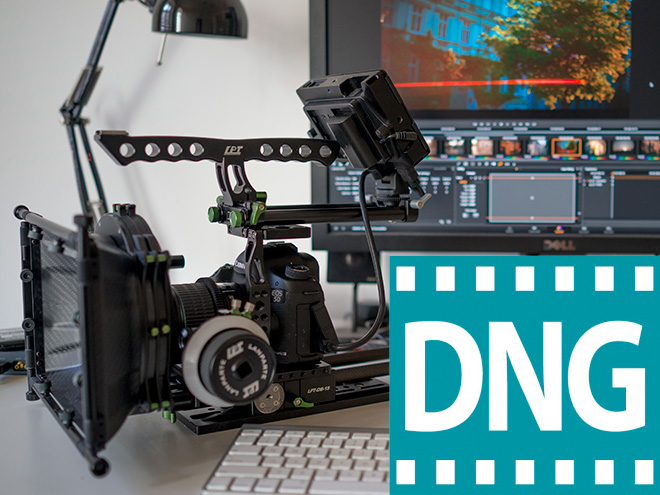At Photokina I talked to product specialists Jörg Ammon and John Morris, both of Canon Europe.
We talked about what improvements the 7D Mark II brings for video as well as few other relevant topics for filmmakers.
Introduction
The 7D Mark II is a high speed stills camera for sports and wild life shooters. The 7D was that too, but at the time it was embraced by a legion of filmmakers and video shooters of all kinds from students all the way up to professional filmmakers. It had such broad appeal.
At that time the competition from other manufacturers for video just wasn’t there. The Panasonic GH1 and Nikon D90 was about it. Cinema EOS did not exist. The Sony FS100 and F3 had not quite arrived. For those brief few months the original 7D and 5D Mark II appealed to practically everyone and almost everyone had Canon or Nikon glass to use on one!
When the Panasonic GH2 came along people were slow to catch on because only the more knowledgable users appreciated what it offered, namely a better image and more video features. By the time the GH4 came along with 4K video this year, the gulf in video spec to Canon’s consumer DSLRs is simply impossible to ignore.
A lot of people made the switch. Sales of the GH4 are in some regions nearly 300% higher than Panasonic had accounted for.
Now the competition is simply staggering for Canon DSLRs in the video market, especially for enthusiasts and advanced amateurs under-$3k and $1k.
With Magic Lantern raw recording taken as an exception, on stock video settings the 5D Mark III and 7D Mark II now rank last in the list for image quality behind products by Sony, Nikon, Panasonic and Blackmagic. In fact not just for the images, but for overall features and video ergonomics as well which mean so much to filmmakers practically.
- Sony A7S
- Panasonic GH4
- Nikon D810
- Blackmagic 4K / 2.5K / Pocket
- Nikon D750
- Nikon D5300
- Certain others
—
Canon 5D Mark III
Canon 7D Mark II
According to this test at Slashcam, the 7D Mark II also still has issues with moire. It’s clearly visible there and detail is softer than on competing Nikon, Sony and Panasonic cameras. On the positive side the 7D Mark II does have an innovative AF system for video, that brings extra settings to dual-pixel AF like the ability to control the speed of your mid-shot focus rack. That’s all well and good but in my experience of using dual-pixel AF I don’t find it an adequate replacement for manual focus when it comes to video and I find it too slow for stills.
The 7D Mark II has some obstacles in the way to success, not least from Canon themselves. Many of the more demanding enthusiasts for stills have switched to the 6D to make use of full frame. Pros who used the original 7D in their video work mainly now shoot on dedicated high end cinema cameras, like the Cinema EOS line, or more recently the Sony F or FS line.
To me it seems clear what the Canon strategy is.
Move users as far up the line as possible to higher margin products.
Move the filmmakers off DSLRs and onto Cinema EOS.
Move the 7D / APS-C / EF-S users up into full frame, starting with the 6D and ending with the 1D C at nearly $12,000.
So where does this leave the 7D Mark II?
Interview
EOSHD: I’d like to start with the 7D Mark II, how has the spec been improved for video?
Jorg Ammon: We’ve improved the CMOS AF slightly. Same resolution but the RGB bayer filter is a little bit different. It has better light absorbance so the colours and brighter, more brilliant. The ISO sensitivity is up to 16,000 instead of 12,800 for video.
So does that make the AF faster in low light?
Slightly yes.
Can you put a figure on it?
No, it’s a very very small difference. But the main difference to the 70D is you’re able to set the AF speed. On the 70D you have maximum focus racking speed, and on the 7D Mark II you have the choice of slower focus racking.
The good feature for me on the 5D Mark III as a filmmaker, is that you don’t need to worry about moire. Canon know how to fix this and I think this is quite a high end product (7D Mark II) for the enthusiast, so is it fixed on the 7D Mark II? A lot of users would like to see this.
[In agreement]. We have an optical low pass filter in the camera, rather than go for higher resolution in total.
As far as I know it is more the way the sensor skips lines that causes moire.
Ah. I don’t have any information yet, unfortunately.
Is it the same sensor as the 70D?
It’s not exactly the same, same technology but a little refined.
Is the 7D Mark II predominantly a stills camera then?
Yes… but. There is a good movie functionality inside, in relation to the 70D.
Well, the way I see it is I’m a little confused… about who the camera is aimed at for video. Canon have moved a lot of the pros to Cinema EOS, but enthusiasts are now looking to alternatives like the Panasonic GH4, Sony A7S, these offer a very high specification for video.
But it has a very good image in video mode.
Better than 5D Mark III?
It depends on the subject. The 5D Mark III has larger pixels, so it’s better in low light.
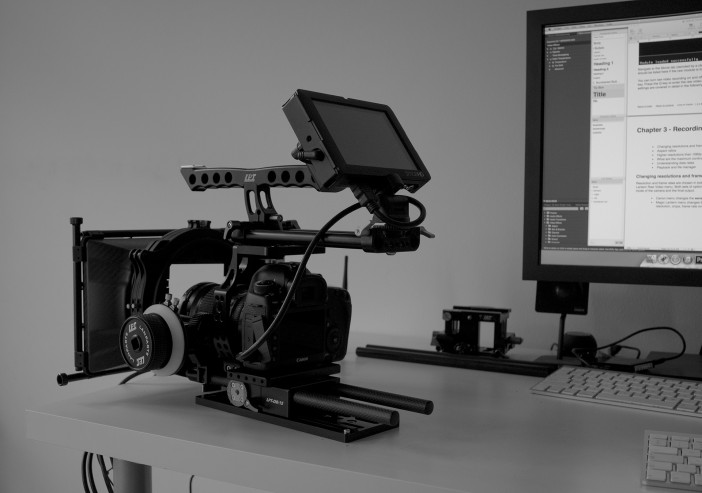
Another interesting thing for me as a filmmaker is the ability to shoot with a small camera, without rigging it up with a big monitor and instead use an articulated the screen. I have to go quite far down the Canon DSLR range to get that. It’s almost as if Canon see this as a low end consumer point & shoot feature when it’s actually quite useful for professionals as well.
Yes I agree, the thing is you don’t have to go down… What makes the 7D Mark II so perfect for professional usage, is the robust body and unfortunately it wouldn’t be so robust if it had an articulated screen.
Well it’d certainly be a cost on the support side, because pros really throw their cameras around.
Yes, well a normal consumer user takes care of their camera. A professional who uses it as a professional tool, throws it around a lot more.
Yes I can see why that’s an issue.
Jorg [calls over John Morris, Canon UK]: Ah you might be able to answer. Does the sensor fix moire on the 7D Mark II.
John [dismissively]: I don’t know.
I think the enthusiast is getting a little worried that there’s no real advantage to shooting a Canon DSLR for video any more and it’s very confusing from the buyer’s point of view if we don’t know the basic info (like moire) at point of sale.
John: Well we find that the C300 is the most rented camera, in the UK certainly.
Indeed but the DSLR users can’t afford it.
John: Well if you’re renting equipment you have Cinema EOS available to you.
Well, I’m talking more about the buyer’s market. And I think one of the advantages of Canon is that they have those great lenses, and that has locked a lot of people into the system. The problem people have with other systems is they don’t want the workarounds of adapters. So I think it’s a bit of a shame the video spec on Canon DSLRs has stayed relatively static. I think it’s really time to push it. There’s no 4K for example.
John: Well we have a 4K offering.
But it’s 12,000 dollars.
Jorg: For most people 4K isn’t the right thing because all the surrounding equipment isn’t fit for 4K. If you edit full HD on your own PC or laptop it needs a lot of time, and it will take 4x more to edit 4K material.
I can edit 4K files from the GH4 on my laptop. So it does work for a fast turn-around, even on a laptop. I find it makes for better scaling in post to 1080p as well. What are the other improvements to video on the 7D Mark II?
Jorg: Better AF and more settings on the AF. If you want more settings in video mode then the 5D Mark III isn’t the right one, you want the 70D or 7D Mark II.
I think the original 7D was very popular for video users.
Jorg: Yes.
Did you ever get any idea of how big that market was?
Jorg: It’s difficult to say whether users bought it for video or stills really.
John: The APS-C format is quite close to Super 35mm.
Yeah. Has the 7D Mark II got a mode where you can crop further into the sensor, for example if you want a more telephoto field of view, without swapping lenses?
Jorg: On the 70D yes.
John: On the 7D Mark II no.
Is that because again it’s seen as a low end feature?
Jorg: [We look through the menus] Nope, it’s not there.
It was there on the 600D.
Jorg: I think it was VGA on that camera.
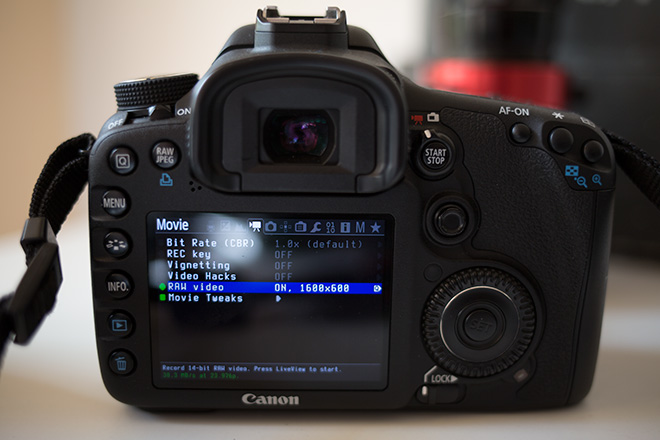
I just want the best product for the money really. There’s a way to get better quality from the Canon cameras, and that’s to install Magic Lantern. It gives you a lovely image, with raw video. Isn’t that something Canon should support?
Jorg: We can’t say anything on the Magic Lantern side! Tricky subject.
John: There’s no guarantee on it, and no manufacturer will support a third party firmware update.
It’s more a piece of software like an app on an iPhone. A large part of Apple’s revenue comes from apps. The camera is merging with the computer, couldn’t you just have an app store on Canon’s website where you can have official add-ons? Surely that would give Canon some extra revenue?
Jorg: Yes it could give us more revenue, but it’s not for me to decide…I could give the feedback to the (Japanese) camera department.
John: C300 had an update, to enable dual-pixel AF. The 7D had a firmware update. We’ve put out loads of updates.
Jorg: If we are to support Magic Lantern we have to check the quality of the software and that takes a lot of work.
I think in general, this camera needed to move forward a bit more over the original 7D. The application of the technology is still good, it’s still simple, but the specification is looking ‘lesser’ compared to the competition at the same price.
John: No! I don’t agree with that. If you look at the technology for the stills photographer and what has come down from our professional line, the 1 series, 1D X… which is actually the pros choice for sports, wildlife, a lot of that technology is now in the 7D Mark II.
But is it likely video will trickle down from the top end of the DSLRs, the 1D C?
John: As we commented on 4K, we have an offering, actually professionals are taking up that offering. We have 4K products.
But if you’re to recommend one Canon camera to consumers for video, for someone who has between $2k to $3k to spend, which one should they choose?
Jorg: I’d recommend the 7D Mark II. Maybe if you’re focussing manually and for real low light, you’d chose the 5D Mark III.
Ok thank you very much.
EOSHD Opinion
The efforts Canon have made to move their most profitable video customers off DSLRs into Cinema EOS are understandable, because A) pros wanted to move and B) $12,000 is actually a pretty reasonable price and a lot of them rent anyway.
For Canon to sell them a DSLR at $3000 instead wouldn’t make any business sense. But the problem I think Canon now have is that the competition has taken a rather different tact. Sony are undercutting Canon on full frame entry level pricing for the advanced amateur, and for video pretty much everyone else is offering a better spec for less money. Even Nikon have now leapfrogged Canon on video features and quality with their prosumer and consumer DSLRs all the way from the D3300 up to the D810.
If it wasn’t for Magic Lantern I’d have sold my Canon gear.
I think in moving the most demanding and image quality conscious customers off video on Canon’s consumer DSLRs and onto Cinema EOS, the quality of video on those cameras has practically been left for dead. We’ve seen very little improvement from the 5D Mark II onwards and it has the potential to hurt sales of Canon’s highest volume products.
None of this makes sense to me. Then there’s the question of mirrorless cameras…
It’s clear to me that the future of all camera technology is the mirrorless format. There’s too very good reasons for this. One is a generational / cultural thing. Younger people are used to using an LCD or an EVF to compose an image, it’s second nature. I do it more often than I use an optical viewfinder and I’m 34. The second reason is that optical systems are a mature format and it has peaked but you can take electronics to a whole new level. Mirrorless is only going to get more and more powerful and open up a gap in image quality & functionality between itself and the best DSLRs.
Canon understandably want to maintain their sales of largely optical-based DSLRs for as long as possible but eventually they will have to dismantle the entire ecosystem and start again for the computer age.
I’m a filmmaker and I just want Canon to make products that I want to buy and support.
It’s completely unacceptable to have a $12,000 camera as an upgrade path from a $3000 DSLR. The C100 is an option but it’s an unexciting one that cannot shoot at frame rates higher than 30fps or bit depths higher than 8bit. It’s of no benefit to me creatively at all.
There’s so much innovation out there in imaging. I’m going to take it.



